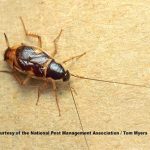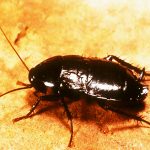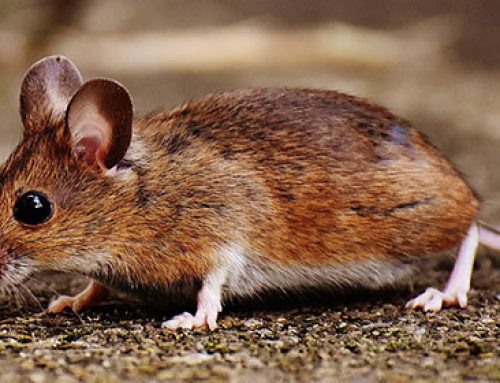A roach is a roach and it’s good as dead. For the longest it didn’t matter what kind of roach it was, because it would soon be annihilated. But, in reality, having roaches in your home is not ok. You can’t just stomp or try to treat on your own. You have to arm yourself with knowledge and professional help. So to start you off on the right track we will cover the anatomy of different types of common roaches, their features and their habitats.
A brief look at the life of a roach
Cockroaches undergo three stages in their development: egg, nymph, and adult. The young nymphs resemble the adults, but they are smaller. They hide during the day in sheltered places and come out to look for food at night. Roaches will run rapidly for shelter and disappear through openings to their hiding places when disturbed. Some typical hiding places for roaches include warm, dark, moist places such as under a sink, or behind a dishwasher, stove, refrigerator, and upper cupboards. Roaches like to feed on basically everything humans leave out with a preference for starchy and sugary material. Some examples include: milk, soda or beer left out or left in unrinsed bottles, nibble cheese, feed on meats, pastry, grain products, and sugar. They will also feed freely on book bindings, sizing, inner linings of shoe soles, and dead insects. Although cockroaches are traditionally associated with dirty dwellings, they are being discovered even in the best of locations including commercial structures. They carry debris on their legs and bodies and may spread germs and contaminate food. Cockroaches also give off an offensive odor that may ruin food, or may persist on dishes or other items the roaches walk across.
 German Cockroach Blattella Germanica
German Cockroach Blattella Germanica
The german cockroach is .5 inches long, is light brown and has two black stripes on the back of the head. The wings cover the tip of the abdomen. The female carries the egg case, which is also light brown, 1-2 days before hatching. The feces are pepper-like specks dropped off near the wall or nest site.
 Brownbanded Cockroach Supella longipalpa
Brownbanded Cockroach Supella longipalpa
The brownbanded cockroach is also .5 inches long. It is light brown, but has light colored bands on the wings. The bands are more noticeable in nymphs than in adults. The female’s wings do not quite cover the tip of the abdomen. The male’s wings do cover the tip of the abdomen. Eggs of this kid of cockroach are light brown and are glued to ceilings, picture frames, furniture, in closets or other dark places. The feces for this type are pepper-like specs on the wall near the nest site. This type of roach prefers high locations, but also hides in closets, under furniture and in heat-generating appliances.
You thought you had it covered didn’t you…no space is safe from these pests! But you got Bullfrog on your side, so call us at 1-800-572-9797.
 Oriental Cockroach Blatta orientalis a.k.a “Water bug” or “Black beetle”
Oriental Cockroach Blatta orientalis a.k.a “Water bug” or “Black beetle”
The Oriental Cockroach is 1 – 1.25 inches long and is dark, reddish brown to black. There are traces of wings on the females and short wings on males. The eggs of this type of cockroach are nearly black and are deposited on debris or food in sheltered areas. The feces is similar to mouse droppings, but under a magnifier one end is slightly tapered. The Oriental Cockroach likes to live below ground level, in damp crawl spaces, basements, and floor drains. The sometimes can overwinter in cisterns and other protected outdoor areas.
 American Cockroach Periplaneta Americana a.k.a “Palmetto bug” or “Water bug”
American Cockroach Periplaneta Americana a.k.a “Palmetto bug” or “Water bug”
The American Cockroach is 1 – 1.75 inches long, is brown with light markings on the back of the head and its wings are one color. Only adults have wings. The Female’s wings are the length of her abdomen and the male’s wings extend past the tip of the abdomen. The eggs of the American Cockroach blend in with the surroundings and is hidden in cracks, soft wood or moist debris. The feces is similar to mouse droppings but under a magnifier are shown to be blunt with ridged markings. The American cockroach likes commercial structures to live in and prefers warm, moist areas in basements, near heating ducts, pipe chase areas, and sewers. It forages mostly on the first floors.
Now that you have a better understanding of the different types of roaches, their features, and their habitats, you can better identify what type of roach is trying to live in your workplace or trying to live with you. This will, in turn, help you be proactive in your approach in ridding your structure, building or home of roaches.
We will help you make a proactive plan against roaches by solving your current problem and preventing future invasions. Call us at 1-800-572-9797.





